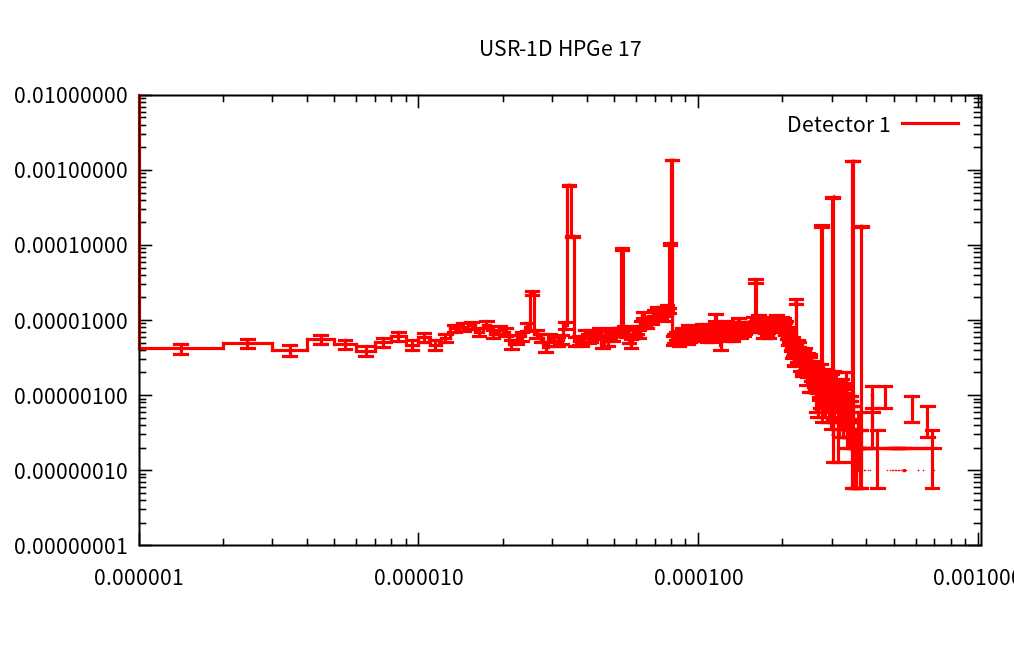Dear FLUKA experts,
I simulate the full-energy-peak efficiency of HPGe for 133Ba. And I use EVENTBIN card and DETECT card to get the energy spectrum(as shown below), but it is different from what is detected in reality. In MCNP, we can use GEB card to get a energy spectrum which is close to real situation by broading the energy spectrum. In FLUKA, how to get a real energy spectrum?
Thanks in advance
Dear Dávid Horváth,
I have read this reply, and I am confused about some questions.
- He mentioned 20 regions, how to use DETECT card to keep track that I have applied the smoothing? (What kind of function of DETECT card I need to use?)
2.I find there is a few words about usreou.f in user manual, I don’t know the physical meaning of the variable ACCUMP and ACCUMN, can you tell me?
3.In the post, I download the simple example, the author have applied a naive 1 MeV smoothing, but I still fell confused about how to modify the usreou.f to get the energy spectrum of 133Ba.
Thanks in advance
Dear @shusheng,
I updated the user routine applying the Gaussian broadening in FLUKA: usreou.f (2.4 KB)
This fixes some issues with the storing the status of the smoothing with the previous one. To make it work, a dummy DETECT scoring has to be added after all other DETECT cards.
It implements the energy dependent FWHM, (the same as the one used in MCNP’s GEB keyword)
where a, b and c are the detector dependent constants. The attached example applies an energy independent 50 keV smoothing to the scoring regions.
Plus to clarify:
-
The number 20 refers to the maximum number of the DETECT scoring in FLUKA. The previous user routine stored the status of the smoothing in the place of the last scoring, but there was an issue with this approach. The current routine uses the already mentioned dummy DETECT scoring.
-
ACCUMPstores the value of the total energy deposited in a single event in all scoring regions specified in a DETECT scoring, whileACCUMNstores the total energy deposited in a single event in all trigger regions (Regions specified with the minus sign). See: https://flukafiles.web.cern.ch/flukafiles/manual/DETECT.html -
The a, b, and c parameters are not depend in the specific isotope, but rather on the HPGe detector itself. If you are modeling a real detector, then it is possible to measure / calculate it. See: https://www.hindawi.com/journals/jep/2014/623683/
Cheers,
David
